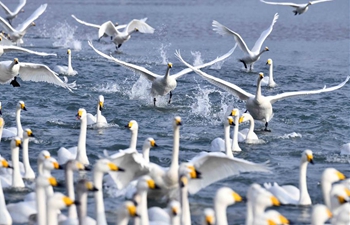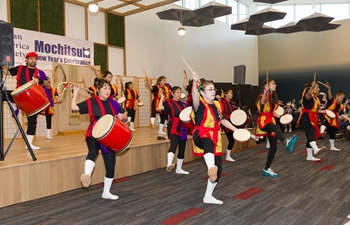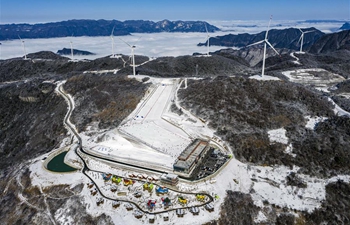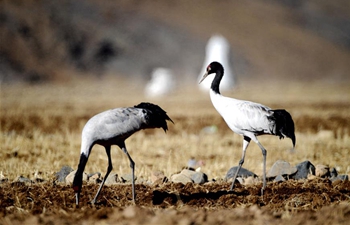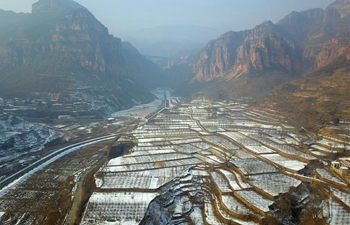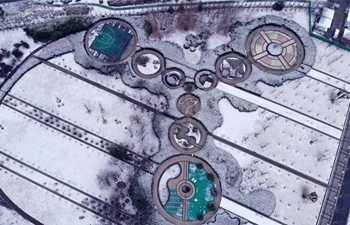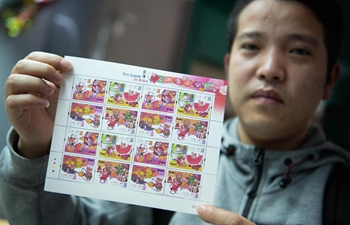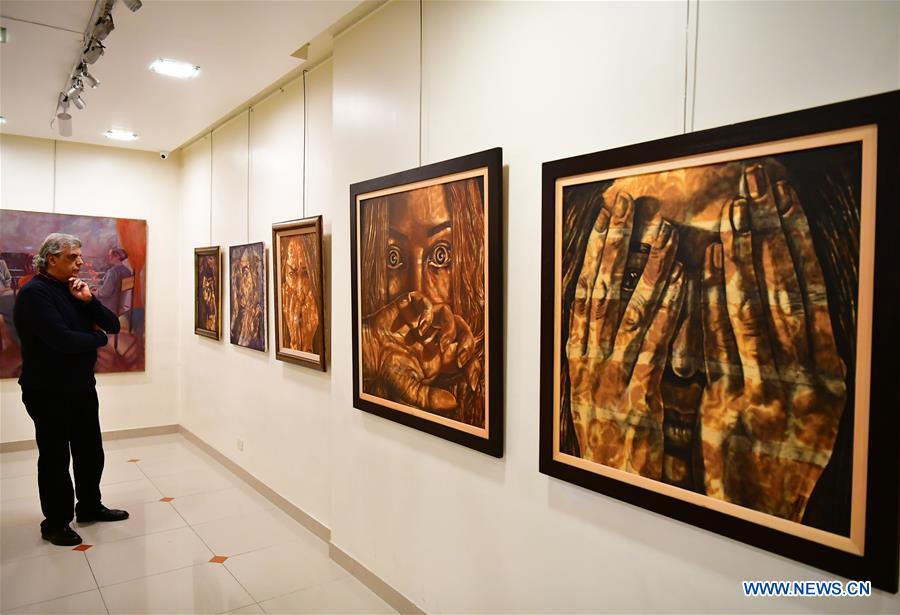
Syrian artist Issam Darwish looks at one of his paintings at his gallery in Damascus, Syria, on Dec. 23, 2019. Shocked, wondering, denying, sad and disbelieving are the faces that have made their ways to Issam Darwish's painting boards that reflect his feelings about his surroundings during the Syrian war. (Photo by Ammar Safarjalani/Xinhua)
by Hummam Sheikh Ali
DAMASCUS, Jan. 13 (Xinhua) -- Shocked, wondering, denying, sad and disbelieving are the faces that have made their ways to Issam Darwish's painting boards that reflect his feelings about his surroundings during the Syrian war.
Born in 1952 in Damascus, Darwish is a famous Syrian artist whose paintings were largely about the serenity and beauty of women and the nature.
He had been adhering to this school of art for decades before the eruption of the Syrian war that has changed all aspects of life and shifted people's priorities.
In his gallery in the Adawi area in Damascus, the faces of war greet the visitors once they set their foot inside the venue. It seems like the beautiful women in his paintings were the still same ones he drew before, but now struck by the calamities of the war.
In pre-war era, he drew women enjoying summer on beaches or coffee on baloneys, but during the war, the women he painted have become heavy-hearted, sad and gloomy.
Speaking about this shift in the painting style, Darwish told Xinhua that in the pre-war time, the colors he used were with strong poetic emotions but the colors of his paintings became monotoned during the war.
"For me, the war has forced me to become extra sensitive about anything that was going on. It's like my skin has turned inside out that every whiff of air could harm me," he said.
As an artist, his feelings about the war were manifested in the faces he has drawn.
His first work during the war depicted a woman grieving inside her house, covering part of her face with the palm of her hand. Outside a window behind her was a boy looking through the window from a distance as if he is lamenting for the sufferings of people.
Darwish's shift in art did not come immediately, as his anger kept boiling under the surface before it was manifested in 2014, three years after the eruption of the crisis.
He said it took him a long time to switch from the art of peace to the art of war, adding that there will still be some way to go before he could return to his previous art form even after the ending of the war.
"I think it will take us a long time to forget the tragedies happened in the war," he said.





